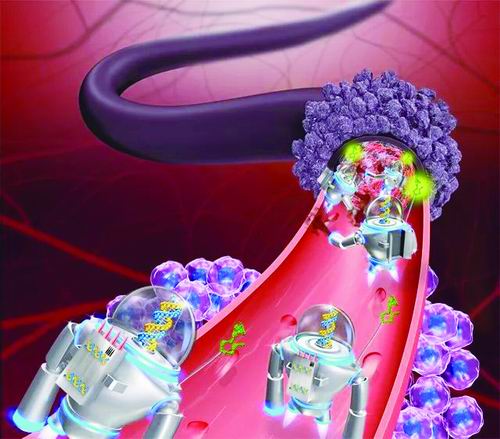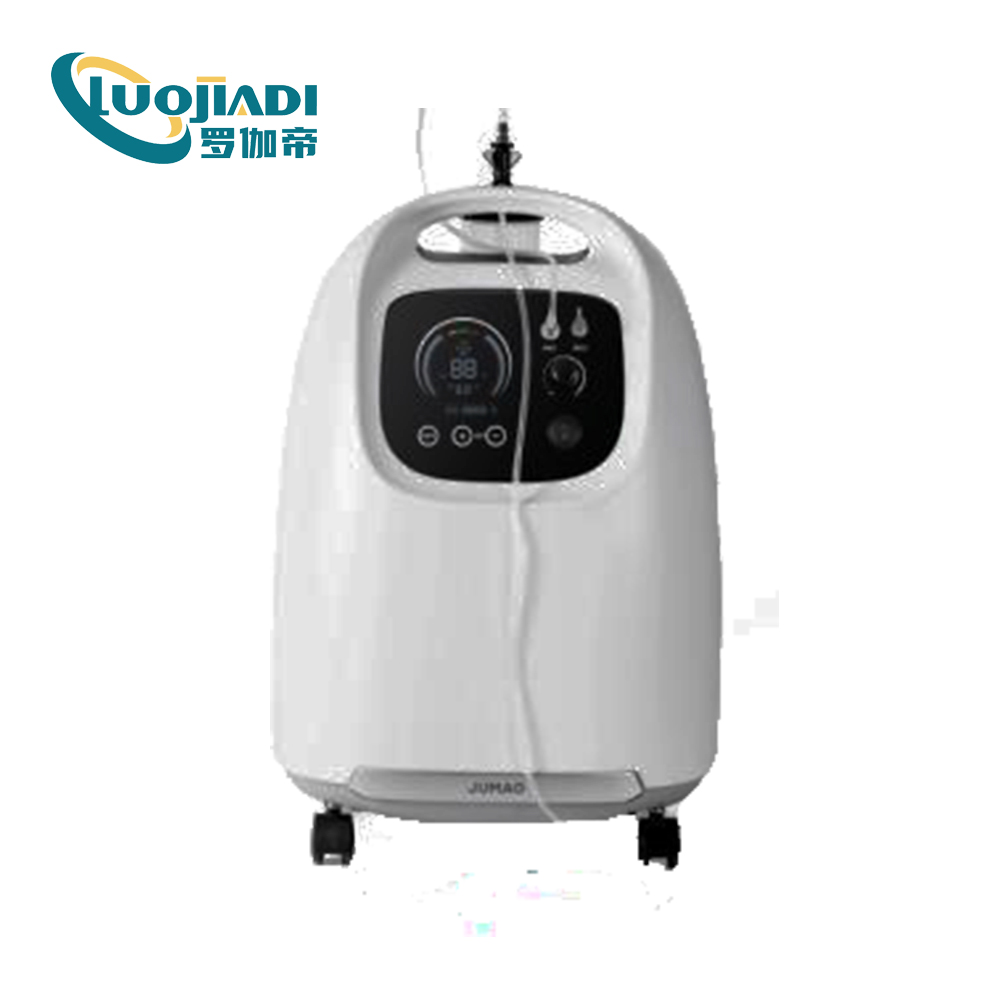Regardless of nationality or ethnicity, almost everyone talks about cancer. Although some cancers are no longer "incurable diseases," they are a minority. According to the latest national cancer statistics released by the National Cancer Center in February 2018, more than 10,000 people in China are diagnosed with cancer every day, and 7 people are diagnosed with cancer every minute. Among them, lung cancer and breast cancer rank first in the incidence of male and female sex. Conquering cancer has long been one of the focuses of scientists. Compared with the currently widely used radiotherapy and chemotherapy treatments, they hope to be able to treat cancer more accurately - killing cancer cells while killing normal cells as little as possible. The use of nano-robots to accurately deliver drugs to tumor cells and kill cancer cells has become one of the ideals that scientists have dreamed of. At the beginning of 2018, Nature Biotechnology published a research paper entitled A DNA nanorobot functions as a cancer therapeutic in response to a molecular trigger in vivo, reporting that a nano-robot made of DNA can be used to carry precise positioning of thrombin. To tumor cells, it can effectively kill tumor cells, and achieved good results in a variety of mouse tumor models, and did not cause a significant immune response. The research was completed by the National Nanoscience Center Zhao Yuliang, Ding Baoquan, and Nie Guangjun in conjunction with Yanzhou, Arizona State University. Nanobots that reach the lesion As early as 1959, Nobel Prize winner Richard Feynman proposed the concept of nano-robot. Since then, scientists from various countries have conducted many researches on nano-robots. In 2016, the leaders of the Montreal Institute of Technology in Canada developed a nano-robot that can operate inside human blood vessels and deliver anti-cancer drugs to tumor cells accurately. The data show that this nano-robot can actually be seen as a group of bacteria, each with flagella and can carry drugs to self-propelled. Since these special bacteria carry the "oxygen concentration measuring sensor", they can enter the inside of the tumor by sensing a hypoxic environment. Ding Baoquan, a researcher at the National Nanoscience Center, told the reporter of the Chinese Journal of Science in an interview that the above research is a kind of magnetotactic bacteria with magnetic-navigation, which can be used to transport drug-loaded nano-liposomes into tumors. Low oxygen area. The bacterial MC-1 strain used in the paper has magnetic iron oxide nanocrystal chains in the cells, and the two navigation modes work together to move along the magnetic field lines and low oxygen concentration of the local magnetic field. Using such bacteria, bacteria loaded with drug-loaded nanoliposomes are directly injected into the paraneoplastic area and magnetically navigated, and more than 55% of the MC-1 bacteria penetrate into the hypoxic region of the transplanted tumor of the tumor-bearing mice. "Our nano-robot system is a completely artificially designed nano-system built entirely using self-assembly methods. It can target tumor blood vessels and be activated by specific molecular markers on the surface of blood vessels, thereby exposing internal drugs and exerting local effects. Ding Baoquan said. Cut off blood supply, "starve" tumor By inducing blood embolism, cutting off the blood supply, and then "starving" the tumor, it was first proposed by the Philip E. Thorpe team, and 1997 Science reported. Nie Guangjun, a researcher at the National Nanoscience Center, said: "However, they use a fusion protein that specifically induces tumor vascular embolization, and there is room for improvement in safety and targeting." After the first report, embolization therapy was silent for a long time. Until 2009, Blood reported for the first time that the method was applied to clinical patients, and 5 of 8 patients achieved good results. "But because the embolic drug is a fusion protein, the targeting is not ideal, so the side effects are large. The subsequent reports are optimized for the targeting and safety of the method, but there has been no substantial breakthrough. The concept of using nano-robot to accurately deliver thrombin drugs to tumor tissue was first proposed by our team. This marks a new breakthrough in the field of technology and treatment ideas, making the field of embolization treatment of tumors active in the field of research. Get up," Nie Guangjun explained. In view of the fact that thrombin is already a mature clinical application of topical hemostatic drugs and the maturity of DNA origami structure construction technology, in 2012, the research team carried out DNA nanobots carrying thrombin. They have successfully implemented the precise structure of nanomachines, including DNA origami structure design, DNA modification coupling and quantification of proteins, responsiveness to open DNA "lock" structure design; continuous optimization to achieve precise targeting of tumors; In the animal body, the nano-robot is switched once and a strong tumor treatment effect is produced. Structurally, the nano-robot can be said to be "tailor-made" for the characteristics of thrombin: for high procoagulant activity, the delivery system first needs to encapsulate thrombin, isolate the substrate during transport, and requires precise targeting. The encapsulated thrombin is delivered to the tumor blood vessels; then the vascular specific signal is used to achieve a responsive "on" nanomachine, exposing the activated thrombin; and finally, it is important that thrombin induces tumor vascular coagulation necrosis Treat tumors. The final completed DNA nano-robot has a tubular appearance, encapsulating thrombin molecules in the tube, and the tube diameter is smaller than the substrate of thrombin in the blood, thereby ensuring safety during transportation. The two ends of the nucleic acid aptamer AS1411 are combined with the nucleolin protein to achieve targeted localization of the tumor vascular endothelium. The DNA nanotubes are made up of a "locked" DNA strand, and the DNA strand of the lock binds specifically to the nucleolin protein, which enables it to open in the vascular endothelium of the tumor, exposes thrombin, and produces a blood coagulation reaction in the tumor. To achieve tumor coagulation necrosis and treat tumors. Using the AS1411 aptamer as a molecular switch, this component has been used as a targeted drug for the treatment of tumors in Phase II clinical practice, which makes nanobots a step closer to clinical applications. Actively promote transformation and strive for early clinical use To validate the effects of DNA nano-robot systems in vivo, the researchers tested them in mouse breast cancer, melanoma, and human ovarian cancer models. The study found that compared to the control group, nano-robots can cause a large number of blood clots in the tumor blood vessels, but will not cause abnormalities in other normal parts, and ultimately reduce the tumor volume and make mice have higher survival rate. According to reports, in vivo, the DNA nano-robot achieves an amplification of the therapeutic effect. Because each tumor blood vessel supplies thousands of tumor cells to grow and block a blood vessel, it will kill countless cancer cells around the blood vessels, which is an effect that other therapeutic drugs cannot achieve. The system theoretically has a therapeutic effect on any vascularized tumor or metastases. Once the thrombus is formed, the blood vessels are blocked, and the clotting blood clots will remain in the blood vessels, causing tumor necrosis, and then being removed by the body together. As a foreign object, nano-robots may trigger some immune responses. After detecting the relevant immunity, it was found that the nano-robot did not cause a significant immune response in the mouse, and no coagulation was detected in the main organs in the pig. This fully demonstrates that the system has a certain degree of security. The research team said that if patients with thrombosis are likely to cause thrombosis in other organs in the body, they will conduct more detailed research. According to reports, in the past six months, the research team has carried out corresponding technical explorations on the difficulty of mass production of nano-robots. It has been able to increase production and productivity dozens of times, making large-scale production possible. At the same time, they also performed long-term safety evaluation at the mouse model level, and the observation time was extended to two months to six months after administration to evaluate whether there was long-term cumulative toxicity. In addition, the team is also using other animal models to conduct different effective dose comparison experiments in order to find the best treatment window. With its outstanding advantages in precision drug delivery and controlled release of space-time drugs, DNA nano-robots have attracted widespread attention in the industry and have strong clinical application prospects. The research team is working hard to advance into clinical trials and expects to serve cancer patients in the near future. (Reporter Zhang Jingjing) Related paper information: DOI: https://doi.org/10.1038/nbt.4071 Source: Chinese Journal of Science (2018-10-26 8th Edition Health) Source: Chinese Journal of Science
When human beings have experienced disasters, we know that life and health are so precious.
dizziness and restlessness.
Oxygen concentrator,oxygen machine,medical oxygen machine,home use oxygen machine Shanghai Rocatti Biotechnology Co.,Ltd , https://www.shljdmedical.com
of human survival.
• Benefits of Oxygen:
Inhalation of oxygen can improve the level of arterial blood oxygen partial pressure and oxygen
saturation of the body, in addition to promote the metabolism of the body, and is also one of the very
important methods for auxiliary treatment of a variety of diseases. Oxygen inhalation can make the
oxygen in the human tissue more abundant, cells will get sufficient oxygen supply after the
metabolism will be more active, normal people will have a refreshed, memory improved, spirit feeling.
Patients with chronic heart and lung diseases, long-term oxygen inhalation can delay the aggravation
of the disease, at the same time, but also can relieve the symptoms of chest tightness, wheezing and
dyspnea of patients. Especially when working under great pressure, they are prone to dizziness,


DNA nano-robot: accurate cancer suppression is no longer difficult
:2018-10-26